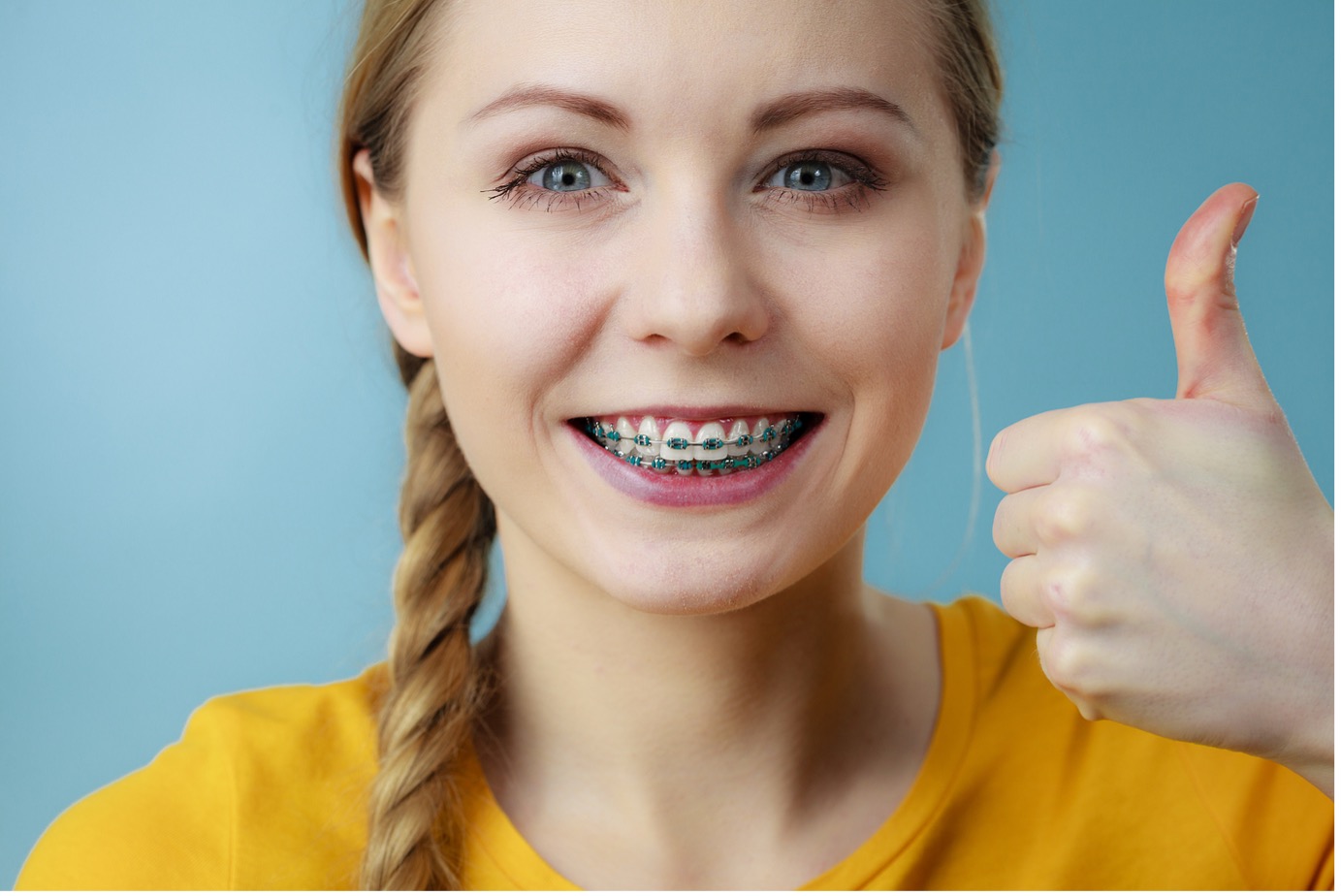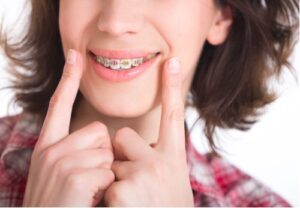How Old Do You Have to Be to Get Braces? A Guide for Parents

How old do you have to be to get braces? Many parents ask this when they notice their child’s teeth shifting or crowding. The right time for braces depends on several factors, including dental development, bite alignment, and overall oral health. While there is no exact age that fits everyone, most orthodontists follow general guidelines to determine when treatment should begin.
Braces help correct issues like crooked teeth, gaps, and misaligned bites. Some children start treatment earlier, while others wait until their teenage years. Understanding the right time for braces can make the process smoother and more effective.
What Is the Best Age for Braces?
The most common age for braces is between 9 and 14 years old. By this time, most of the permanent teeth have come in, making it easier to correct alignment issues. Orthodontists recommend an evaluation by age 7 to check for early signs of crowding or bite problems.
Factors That Influence the Right Age
Several factors determine when a child should get braces:
- Permanent Teeth Development – Most orthodontic treatments begin when a child has lost most of their baby teeth.
- Jaw Growth – Braces are often more effective while the jaw is still growing.
- Bite Alignment – Issues like overbite, underbite, or crossbite may require treatment earlier or later.
- Severity of Dental Issues – Some cases need early intervention, while others can wait.
Early vs. Later Treatment
-
Early Treatment (Ages 7-10)
- Usually for severe cases, such as extreme crowding or bite misalignment.
- May involve expanders or partial braces to guide growth.
-
Standard Treatment (Ages 11-14)
- The most common time for full braces.
- Permanent teeth are in place, and the jaw is still growing.
-
Teen and Adult Braces (15+)
- Treatment is still possible but may take longer.
- Options like Invisalign or clear braces are popular for aesthetics.
So, how old do you have to be to get braces? The answer varies for each child, but an early consultation with an orthodontist can help determine the best time to begin treatment.
Signs Your Child May Need Braces Early
Some children need orthodontic treatment before their teenage years. This is known as Phase 1 treatment, which focuses on correcting early issues that could become more serious later. Identifying the need for braces early can prevent complications and make future treatment easier.
Common Signs to Watch For
If your child shows any of the following signs, an orthodontic consultation may be a good idea:
- Crowded or Overlapping Teeth – When there isn’t enough space for teeth to grow in properly.
- Gaps Between Teeth – Some gaps may close naturally, but others may need correction.
- Overbite or Underbite – A misaligned bite can cause chewing problems and jaw discomfort.
- Crossbite – When upper and lower teeth don’t align properly, leading to uneven wear.
- Speech Issues – Difficulty pronouncing certain sounds may be linked to dental alignment.
- Mouth Breathing – This can indicate jaw development issues that braces may help correct.
- Thumb-Sucking Beyond Age 5 – Prolonged thumb-sucking can push teeth forward, affecting bite alignment.
When to See an Orthodontist
An orthodontic evaluation is recommended by age 7, even if no obvious problems are present. Early visits allow the orthodontist to monitor growth and decide if treatment should start sooner. If no immediate intervention is needed, regular checkups can track changes and determine the right time for braces.
While many children begin treatment in their early teens, signs of orthodontic issues can appear much earlier. Addressing them at the right time can lead to better results and a healthier smile.
What If You Get Braces as a Teen vs. as an Adult?
Braces aren’t just for kids. Many teens and adults choose orthodontic treatment to improve their smiles and fix alignment issues. The experience can vary depending on age, but the goal remains the same—healthier teeth and a better bite.
Braces for Teens (Ages 12-18)
The teenage years are the most common time for braces. By this stage, most permanent teeth have come in, and the jaw is still growing, making it easier to move teeth into the right position.
Why Teens Benefit from Braces:
- Teeth shift more efficiently due to ongoing jaw development.
- Treatment time is often shorter compared to adults.
- Options like ceramic braces and Invisalign help with appearance concerns.
- Most peers have braces, reducing self-consciousness.
Braces for Adults (18+)
Many adults choose braces later in life, often because they didn’t get treatment as a teen or their teeth shifted over time. While adult orthodontics is effective, treatment may take longer since the jaw has stopped growing.
What to Expect with Adult Braces:
- Teeth may take longer to move into place.
- Options like Invisalign and clear braces make treatment more discreet.
- Some cases require additional procedures, like tooth extractions or surgery.
- Long-term oral health improves by correcting bite and alignment issues.
While most teens start treatment between ages 12 and 14, it’s never too late. Braces can be effective at any age, with the right approach and orthodontic care.
Types of Braces Available for Different Ages
Braces come in different styles to fit the needs of children, teens, and adults. Some focus on strength and efficiency, while others are designed for a more subtle look. The best choice depends on the complexity of the case, lifestyle, and personal preference.
Traditional Metal Braces
- The most common and effective option for all ages.
- Made of high-grade stainless steel.
- Work well for mild to severe alignment issues.
- More affordable than other types.
Ceramic Braces
- Similar to metal braces but use tooth-colored or clear brackets.
- Less noticeable than traditional braces.
- A popular choice for teens and adults concerned about appearance.
- Require extra care to prevent staining.
Invisalign (Clear Aligners)
- A nearly invisible option made of clear plastic trays.
- Best for teens and adults with mild to moderate alignment issues.
- Removable, allowing for easier eating and brushing.
- Requires discipline to wear for 20-22 hours per day.
Lingual Braces
- Placed on the back of the teeth, hidden from view.
- Ideal for adults who want a discreet treatment.
- Can take time to adjust to, as they may affect speech at first.
- Typically more expensive than other options.
The right choice depends on the severity of the case and personal preference. You may still ask, how old do you have to be to get braces? While treatment often starts in the early teen years, different options are available for all age groups, from children to adults.
FAQs: Common Parent Concerns About Braces
Parents often have questions before starting orthodontic treatment for their child. Understanding the process can make the experience easier and less stressful. Here are answers to some of the most common concerns.
Does Getting Braces Hurt?
There may be some discomfort when braces are first placed and after adjustments. This usually lasts a few days and can be managed with over-the-counter pain relievers, orthodontic wax, and soft foods.
How Long Do Kids Need Braces?
Most treatments last between 12 and 24 months, but the timeline varies based on the complexity of the case. Some may need them for a shorter period, while others require longer adjustments.
What’s the Cost of Braces?
The cost depends on the type of braces, treatment length, and location. Many orthodontists offer payment plans and accept dental insurance to help manage expenses.
Can Kids Still Play Sports with Braces?
Yes, but wearing a mouthguard is recommended to protect teeth and braces from injury during contact sports.
Do Braces Affect Eating Habits?
Some foods should be avoided to prevent damage, including:
- Hard foods like nuts and popcorn.
- Sticky foods like gum and caramel.
- Chewy foods like bagels and tough meats.
What Happens After Braces Are Removed?
A retainer is usually needed to keep teeth in place after treatment. Retainers prevent shifting and help maintain results long-term.
So, how old do you have to be to get braces? While timing varies for each child, understanding the process and expectations can make the journey to a healthier smile much smoother.
When Should You Schedule an Orthodontic Consultation?
The best way to determine if a child needs braces is through an orthodontic evaluation. While some kids start treatment in their early teens, others may need it sooner or later based on their dental development.
Signs It’s Time for a Consultation
Parents should consider scheduling an appointment if they notice:
- Crowded or misaligned teeth
- Frequent biting of the cheeks or tongue
- Early or late loss of baby teeth
- Difficulty chewing or speaking
- Jaw pain or shifting
Ideal Timing for the First Orthodontic Visit
- The American Association of Orthodontists (AAO) recommends an initial checkup by age 7.
- Even if braces aren’t needed right away, early visits help monitor growth and detect potential issues.
- If orthodontic care is required, the orthodontist will create a customized plan based on the child’s needs.
If you’re still wondering, how old do you have to be to get braces? The truth is, the right time varies for every child. An early consultation can provide answers and set the stage for a smooth and successful orthodontic experience.
Take the First Step Toward a Healthier Smile
Deciding on the right time for braces is an important step in your child’s dental health. At Dr. Lints Orthodontics, we provide expert care tailored to each patient’s unique needs, ensuring a smooth and effective treatment process. Our team is committed to creating a comfortable and stress-free experience, whether it’s an early evaluation or full orthodontic treatment.
We believe that every smile should be healthy, functional, and confident. With a comprehensive approach to orthodontics, we focus on long-term results that support overall dental well-being. If you’re considering braces for your child or yourself, now is a great time to schedule a consultation. Contact Dr. Lints Orthodontics today to get started on the path to a better smile.
GETTING STARTED WITH INVISALIGN
If Invisalign sounds like it is the right fit for you, call or text us to set up a complimentary consultation. During this consultation, Dr. Lints and team will:
- 1. Review your dental and medical history
- 2. Perform a complete oral exam
- 3. Help you determine if Invisalign is the best route for you
- 4. Create you a customized treatment plan with before and after simulation
- 5. Discuss flexible payment plan options and insurance benefits if applicable



